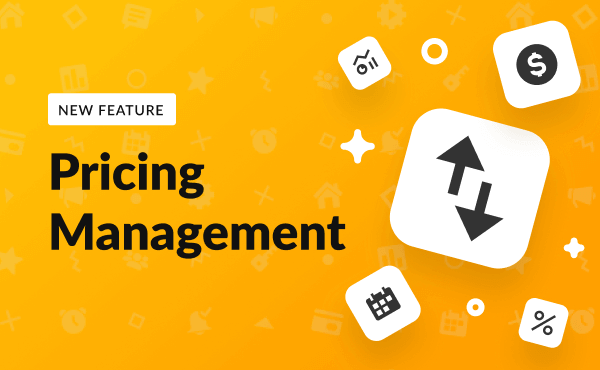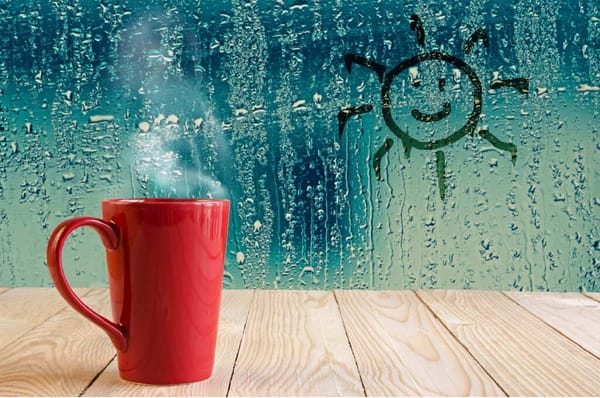RevPAR, Occupancy Rate, ADR, and Other Hotel Metrics: How to Evaluate Your Property’s Performance

RevPAR stands for Revenue per Available Room, which is a commonly used metric in the hotel industry to measure the overall financial performance of a property. The revenue per available room has a direct correlation with hotel performance and is a main factor in generating revenue.
In the context of short-term rentals, you can calculate RevPAR to evaluate the efficiency and profitability of an individual rental unit, such as a vacation home or an apartment. It is calculated by dividing the total rental revenue by the number of available units, taking into account both occupancy and average daily rate.
RevPAR helps property owners and managers to understand the effectiveness of their pricing strategy, as well as identify opportunities to increase revenue and improve the bottom line.

Why is RevPar important?
RevPAR is considered an important metric in the short-term rental industry, as well as the hotel industry because it measures the efficiency and profitability of property and forms part of a business’s revenue management strategy. There are several reasons why RevPAR is important:
- It measures revenue performance: RevPAR provides a snapshot of the revenue generated per available room, giving property owners and managers a clear indication of how well their property is performing financially.
- It takes occupancy into account: Occupancy is a crucial factor in the success of a hotel or short-term rental property, and RevPAR takes this into consideration. By combining occupancy and average daily rate per available room, RevPAR gives a more complete picture of the property’s financial performance than simply looking at occupancy alone.
- It helps with pricing strategy: RevPAR can help property owners and managers determine the effectiveness of their pricing strategy. If RevPAR is low, it may indicate that room prices are too low or that occupancy is low. In either case, the property owner can make adjustments to improve the bottom line.
- It allows for benchmarking: By tracking RevPAR over time, property owners and managers can compare their property’s performance to industry benchmarks and make informed decisions to stay competitive.
RevPAR is a valuable metric for hotels and short-term rental properties as it provides a comprehensive view of the property’s financial performance and helps owners and managers make informed decisions to optimize revenue and improve their bottom line.
There is also the RevPAR Index, referred to as the Revenue Generating Index (RGI), which measures performance relative to an aggregated grouping of vacation rentals or hotels. Essentially measuring against competitors in the same market segment with a revenue-generating index.
How to Calculate RevPAR and Other Key Hotel Metrics
As a hotelier or short-term rental property manager, it’s important to have a solid understanding of key performance indicators (KPIs) to evaluate the financial performance of your property.
In this section, we’ll provide you with a formula sheet for calculating a vacation rental or hotel’s RevPAR, as well as some other key hotel metrics that can provide valuable insights into your business.
-
RevPAR (Revenue per Available Room)
RevPAR is a key metric that measures the average revenue generated per available room. It’s calculated as follows:
RevPAR = Total Room Revenue / Number of Available Rooms
-
Gross Operating Profit per Available Room (GOPPAR)
GOPPAR, gross operating profit, is a metric that measures the profit generated by a hotel after deducting operating expenses. The GOPPAR formula goes even further by taking the profit after combining total revenues and total expenses and dividing once again by rooms available. Gross operating profit is calculated as follows:
GOPPAR = (Total Room Revenue – Total Operating Expenses) / Number of Available Rooms
-
Total Revenue per Available Room (TRevPAR)
TRevPAR is a metric that measures the total revenue generated by a hotel, including both room revenue and non-room revenue such as food and beverage sales. It’s calculated as follows:
TRevPAR = (Total Room Revenue + Total Non-Room Revenue) / Number of Available Rooms
By using these formulas, you can calculate important KPIs that provide a comprehensive view of your hotel or short-term rental property’s financial performance. By keeping track of these metrics, you can make informed decisions to optimize your pricing strategy, increase revenue, and improve your bottom line.

Occupancy Rate, ADR, and ALOS: Basic Operational Metrics
While RevPAR is a widely used metric in the hotel and short-term rental industry, it’s not the only metric that provides insight into the financial performance of your property. In this section, we’ll explore some alternative metrics that can help you gain a more comprehensive view of your property’s performance.
Three of the most commonly used metrics are Occupancy Rate, Average Daily Rate (ADR), and Average Length of Stay (ALOS). We’ll explore these metrics and why they’re important for hoteliers and short-term rental property managers.
Occupancy Rate
Occupancy rate is the percentage of rooms that are occupied. It provides insight into the demand for your property and can help you determine the optimal room rates to set.
To calculate Occupancy Rate, divide the total number of occupied rooms by the total number of available rooms, and then multiply by 100 to convert it to a percentage. Here’s the formula:
Occupancy Rate = (Total Number of Occupied Rooms / Total Number of Available Rooms) * 100
For example, if a property has 100 available rooms and 80 of them are occupied, the Occupancy Rate would be 80%:
Occupancy Rate = (80 / 100) * 100 = 80%
It’s important to note that Occupancy Rate is a leading indicator, meaning it provides insight into current demand and performance. By regularly monitoring and analyzing Occupancy Rate, you can make informed decisions to optimize your property’s performance and attract more guests.
Average Daily Rate (ADR)
ADR measures the average revenue per room per night using the average room rate. It provides insight into the pricing strategy of a property and helps identify whether room prices are too high or too low.
RevPAR vs ADR: What’s the difference?
So, what’s the difference between RevPAR and ADR? RevPAR measures the revenue of a property per available room, while ADR measures the average revenue per occupied room, per night. In other words, RevPAR provides a comprehensive view of the property’s financial performance by taking into account both occupancy and average daily rate, while ADR only measures the average daily rate.
By tracking both RevPAR and ADR, property owners and managers can gain a more complete understanding of their property’s financial performance. For example, if a property has a high ADR but low occupancy, this may indicate that room prices are too high and not attracting enough guests. On the other hand, if a property has a high occupancy but low ADR, this may indicate that room prices are too low and not generating enough revenue.
Understanding the difference between RevPAR and ADR is important for hoteliers and short-term rental property managers. By tracking both metrics, you can make informed decisions to optimize your pricing strategy, increase revenue, and improve your bottom line.
ALOS (Average Length of Stay)
Average Length of Stay (ALOS) is a metric that measures the average number of nights guests stay at a property. It provides insight into guest preferences and can help you optimize pricing and promotions to attract more guests and increase revenue.
To calculate ALOS, divide the total number of nights occupied by the total number of guests. Here’s the formula:
ALOS = Total Nights Occupied / Total Number of Guests
For example, if a property has 100 guests staying for a total of 500 nights, the ALOS would be 5:
ALOS = 500 / 100 = 5
It’s important to note that ALOS is a lagging indicator, meaning it reflects past performance. To make data-driven decisions about pricing, promotions, and other strategies, it’s important to track other metrics, such as Occupancy Rate, ADR, and RevPAR, that provide insight into current demand and performance.
By regularly monitoring and analyzing ALOS, you can gain insight into the preferences of your guests and make informed decisions to optimize your property’s performance.

Other Notable Metrics
Total Revenue
Total revenue, or net revenue, is the total revenue of a property, including room revenue, restaurant revenue, and any other sources of income. It provides a broader view of a property’s financial performance. It can help revenue managers, hotel managers, and hosts identify opportunities to not only improve RevPar but identify other areas that could have a significant impact on the property’s ability to bring in more money.
Length of Stay (LOS)
LOS measures the average number of nights a guest stays at a property. It provides insight into guest preferences and can help you optimize pricing and promotions to attract more guests and increase revenue.
Guest Acquisition Cost (GAC)
GAC measures the cost of acquiring each new guest, including marketing and advertising expenses, referral fees, and other costs associated with attracting new guests to your property. By tracking GAC, you can determine the effectiveness of your marketing efforts and make data-driven decisions to optimize your guest acquisition strategy.
While RevPAR provides valuable insight into a property’s financial performance, it’s important to track other metrics to gain a more comprehensive view of your property’s operation.
By regularly monitoring metrics such as ADR, occupancy rate, GOP, total revenue, LOS, and GAC, you can make informed business decisions to increase revenue, improve efficiency, and optimize your property’s performance.
Tips to Increase RevPAR at Your Short-Term Rental
- Optimize pricing strategy: Use dynamic pricing tools to set room rates that are in line with demand and competition. Analyze market data and adjust prices based on peak and low seasons, special events, and other factors that affect demand.
- Enhance property amenities: Invest in upgrades and improvements to your property to enhance the guest experience and increase the perceived value of your rental. This can include adding new furniture, upgrading the kitchen or bathroom, and providing high-quality bedding and linens.
- Increase occupancy: Promote your property through multiple channels, including social media, travel websites, and local tourism boards. Offer special packages and promotions to attract more guests and increase occupancy during low-demand periods.
- Improve guest experience: Provide excellent customer service and create a welcoming environment for guests. Respond promptly to guest inquiries, provide clear check-in instructions, and ensure that the property is well-maintained and clean.
- Utilize technology: Implement technology solutions to streamline operations and increase efficiencies, such as automated booking systems, smart home technologies, and keyless entry systems.
- Offer add-on services: Provide additional services that guests can purchase, such as airport transfer, meal delivery, or local experiences. These services can help increase the overall revenue from each guest stay.
- Monitor and analyze data: Regularly monitor and analyze key performance indicators such as occupancy, average daily rate, and RevPAR to identify areas for improvement and make data-driven decisions to optimize revenue.
Increasing RevPAR at your short-term rental requires a combination of pricing strategy, property improvements, marketing efforts, customer service, technology, and data analysis. By following these tips and continually evaluating your property’s performance, you can increase revenue and improve your bottom line.
In addition to better understanding your property’s RevPar, why not take it a step further and try out software like iGMS that will not only help you keep track of variable expenses, but also automate the booking process and day-to-day operations?
iGMS can help you:
- Avoid double bookings and manage multiple properties across the top OTAs, including Airbnb, Booking.com, and Vrbo.
- Take your guest communication to the next level by utilizing a unified inbox and automated messages
- Create a professional direct booking website in minutes with the vacation rental website builder tool
- Automate cleanings, assign tasks to your specific team members, and monitor their performance





![Your Monthly iGMS Roundup [February 2020]](/content/images/size/w600/wordpress/2020/02/igms-roundup-feb-2020-cover.png)

